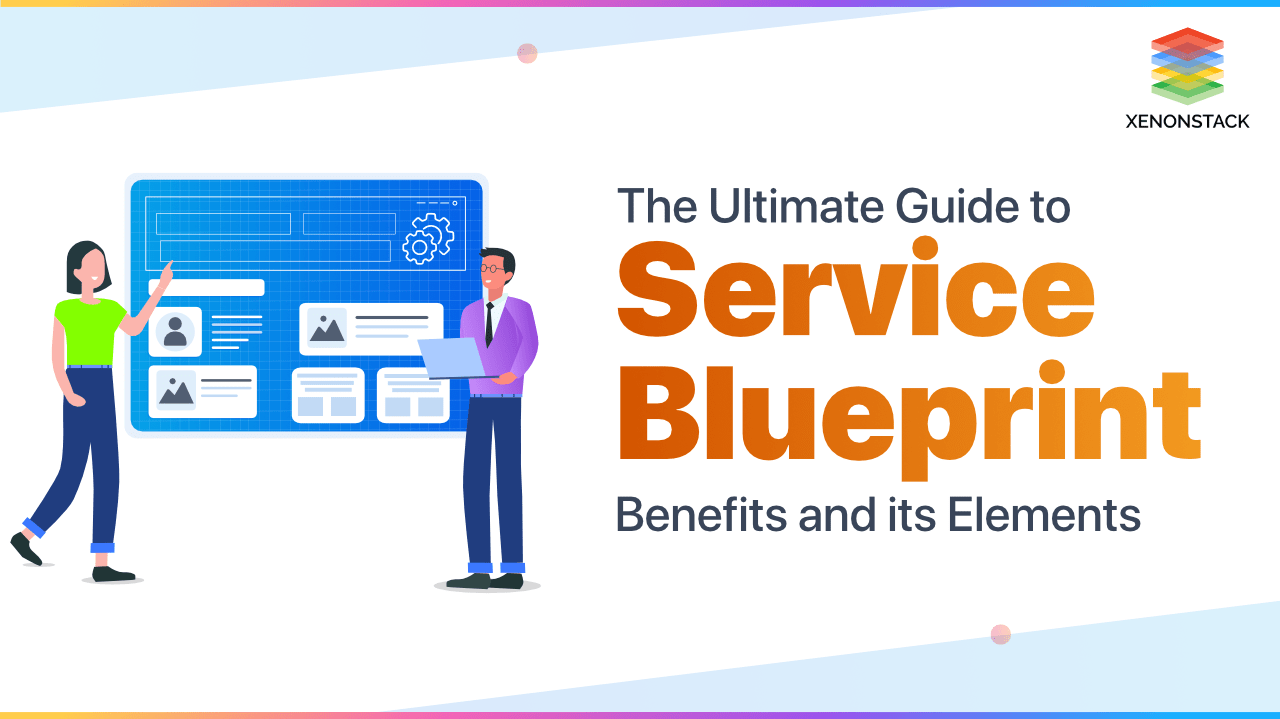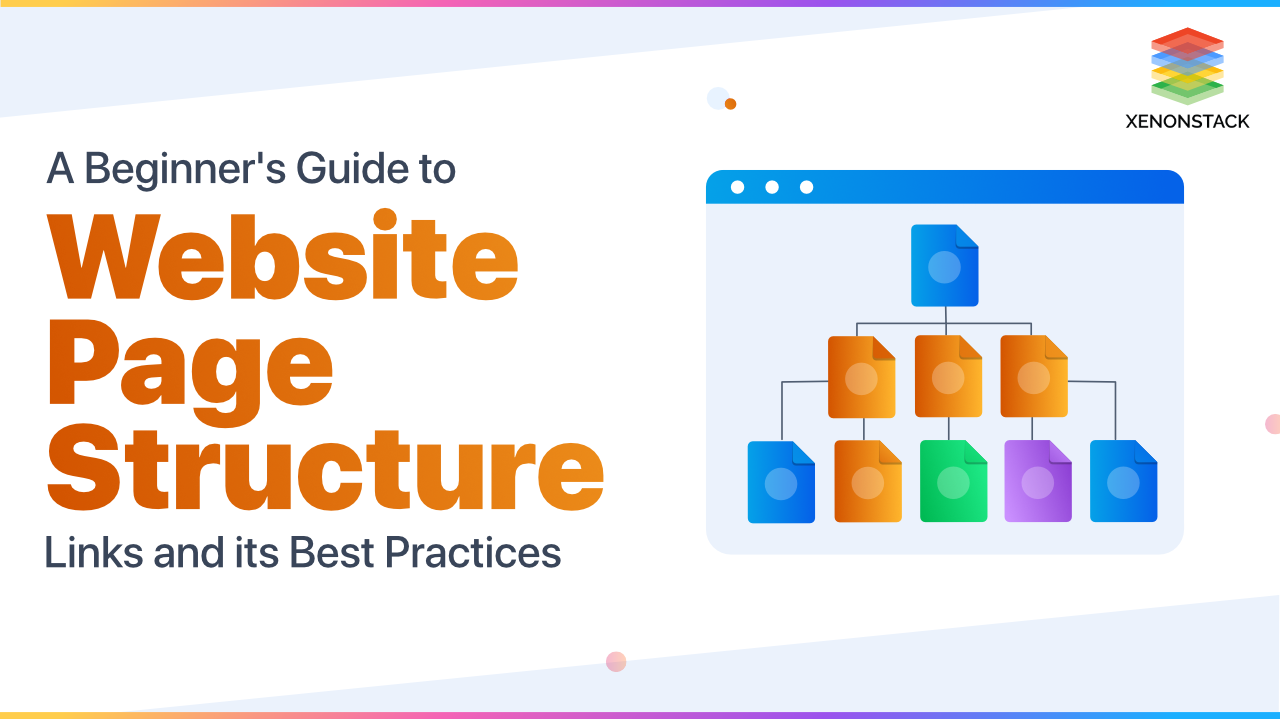
Introduction to Service Blueprint
The Service blueprint visualizes the relationship between people, props, and processes, which can be depicted as a deeper level of understanding of customer Journey Mapping. It is a diagram that visualizes what service is offered. It is a visualization based on swimlanes, where each lane is assigned to a different category, with the interactions linked between lanes through arrows as shown below.
It gives a complete picture of how the service is delivered from front to back. The blueprint gives information for making decisions and helps the team set up the project for success. As service takes shape, the blueprint can be further iterated and refined to build awareness about the service. Here is the diagram for the it, how it accommodates the service in a blueprint from front to back, covering every customer's action both physically and digitally.
User experience design is a user-product interaction, and improve the product, and users experience by addressing all perspectives of a product by the user's feedback & requirements. Click to explore about, User Experience Design Tools and its Principles
Why Service Blueprint is important?
It is essential for the service that the team is developing for the customer so that each member in the team is on the same page, and the whole idea of service outcome is shared across the whole organization.
Gives clarity
Blueprints can clarify the product or service, and the team can focus on the work that has to be done to move the product/service forward. It can help identify the work and who has to do it.
Improve Customer Experience
Measuring the service against a blueprint and regular customer feedback can help identify opportunities to improve that can positively impact the business.
Change in Process/System
When there is some change in the process for a service or product, the previous blueprints are important so that future change impact can be analyzed, and changes in the blueprints can be done so that the whole team is on the same page.
UX is the most important building block in software development. Even its priority is higher than User Interface. Click to explore about, User Experience in Software Product Development
What is the difference between customer journey map and service blueprint?
As Customer Journey mainly focuses on the interaction of customers with the organization, it goes a bit deeper; it covers the backstage of the business and how this is tied to the customer’s experience.
Customer Journey Map's main focus is on customer’s touchpoints like how the customer feels while using the service/product, what the customer is thinking about the product/service, and what the customer is doing with the product/service developed. It focuses on the customer's emotions and less on the service process details.
On the other hand service blueprint is a detailed diagram of the service delivery process, including all the onstage and backstage actions. It focuses more on the information about the internal process and the support system that helps deliver the service to the customer than focusing on the customer's experience. We can say that it is a subset of a customer journey map.
A good user experience allows your customers to quickly and easily find information. Click to explore about, Comparing Customer Experience and User Experience
What are the key elements of it?
Every service blueprint includes some key elements that are required before creating the blueprint :
Customer Actions
It includes all the steps, actions, choices, and interactions the customer performs while going through the service to reach a particular goal. This data could be easily extracted from the customer journey map.
Frontstage or Visible Employee Actions
All the actions that are in view of the customer, and these actions can be human-to-human or human-to-computer. The contact team member performs Human-to-human activities. Human-to-computer activities are performed when the customer directly interacts with the self-service technology. These activities include every action of the customer interacting with the service.
Backstage or Invisible Contact Employee Actions
All the activities are performed behind the scenes to support the frontstage actions. These activities are not visible to the customer. The actions can be employees maintaining the company’s website, marketing employees creating the advertisements, etc.
Support Processes
These are the processes that support the employees in delivering the service to the customers.
Lines
It also have three different types of lines that help in dividing the key elements:
Line of Interaction
It depicts the direct interaction of the customer with the organization.
Line of Visibility
This line in the blueprint depicts the actions/activities that will be visible to the customer. The activities above the line will be visible ( frontstage activities ) to the customer, and the activities below the line will be backstage activities that are not visible to the customer.
Line of Internal Interaction
It separates the employees who do not directly support the customer’s interaction from the employees who directly support the customer’s interaction.
A good user experience allows your customers to quickly and easily find information. Click to explore about, Comparing Customer Experience and User Experience
How to create a it?
Before creating the service blueprint, the first step is to identify how the blueprint will be used and who it is for? The development of it involves people from cross-functional teams.
For creating it, the below steps can be followed:
Identify Service Process
Firstly, it is necessary to understand the primary purpose of creating the blueprint; once it is clear, it can be identified which process to start with.
Customer Segment Identification
The second step is to understand how many types of customers will be there for the service and understand their needs and requirements, so for these different types of customers, the service can change from segment to segment. So it gives clarity to blueprint these processes separately.
In this step, the need is to identify the particular customer segment for which the service process caters; once this is defined, the need to get an idea about the customer’s actions at different steps of the process is required. This data can be gathered through customer journey maps.
A designing process which focuses on creating engaging web Interfaces with logical thoughts, behaviors, and actions. Click to explore about, Interaction Design Principles
Mapping onstage and backstage contact team member actions
In this step, the need is to gather information through questionnaires from the operational employees, which helps gather the relevant information on the activities they perform and which are behind the scenes. These activities also involve the technology, if any, used for delivering the service.
Linking of contact activities to support functions
In this step, the need is to map the support processes that the employee relies on to carry out the interactions above the line of interaction.
Once the support functions are identified, it has to be linked with the contact activities.
Final Touch
Lastly, the blueprint can also include additional elements such as metrics, time indicators, and employee emotions.
Once it is complete, the blueprint is ready to be shared with the team to understand the service better.
What are the benefits?
- It can act to bring the people and teams across the organization together. This further creates a single source of truth and information.
- It enables the employee’s mindset to be part of the process and understand how important it is to understand the customer’s point of view.
- It shows the service design decisions and creates points of interactions between the customer and the service to show where the experience matters.
- It helps the organization in identifying the gaps in the service experience.
It helps the organization reach the desired goal.

Conclusion
These blueprints help the organization understand the bigger picture of how the service is used by the company and implemented by the company. These blueprints help identify the pain points and improve the customer's experience. They enable mapping all the interactions related to delivering the service and determine the KPIs for those interactions. It simplifies the task of mapping out each step of the process, making it easier to design a new service delivery system or improve the existing one.
- Discover more about Google Lighthouse for Advanced SEO Optimization
- Click to explore about Conversational User Interface
- Learn more about User Experience Best Practices


